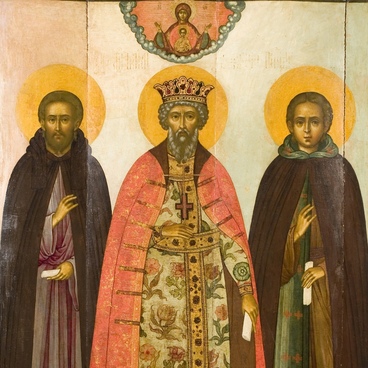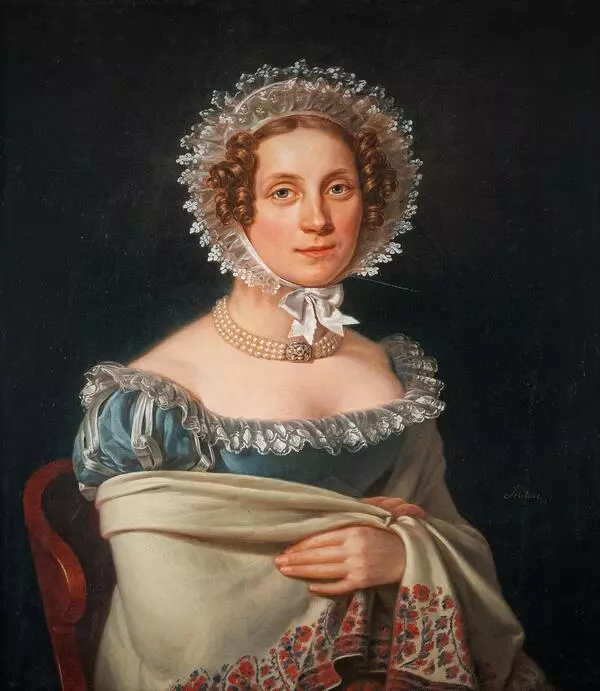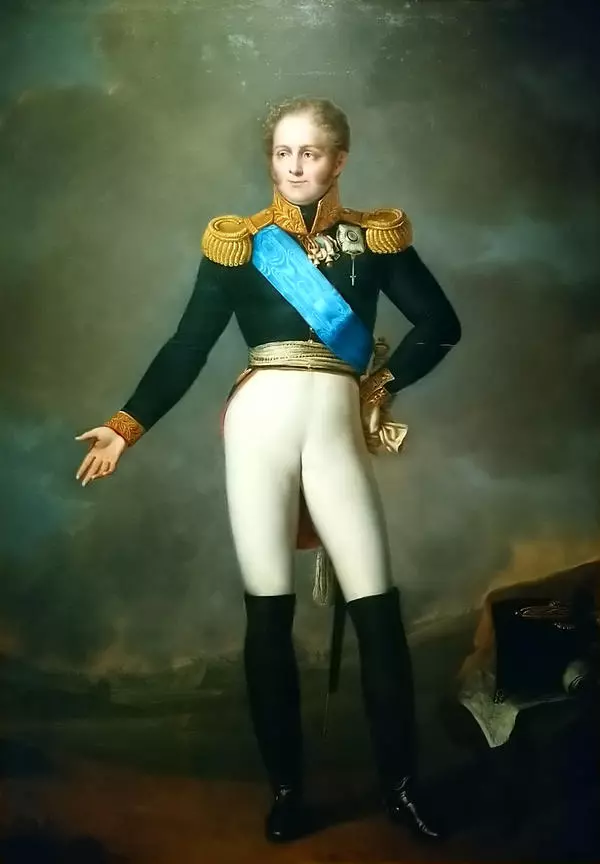Benoît-Charles Mitoire (1782-1832) was a Russian artist, painter and lithograph of French origin, the academic of the Imperial Academy of Arts. He was the author of many portraits of Russian noblemen and public officials. He was born in Paris, France and at the age of 19 moved to Russia, where he decided to stay forever. Here he married a Russian girl and got the Russian partiality.
The portrait features countess Elizaveta Nikolaevna Pototskaya (1795-1876), born countess Golovina. She was a Court’s maid of honour, Dame of the Order of St. Catharine. She got her name after Empress Elizabeth of Russia, who was her mother’s close friend at one of her life’s periods.
Elizaveta Nikolaevna, a younger daughter in the Golovin family, married a diplomat, full privy councilor, member of the state council, chief master of the court, count Lev Severinovich Pototsky (1789-1860). After getting married she lived in different European capitals, in Poland and Russia. From 1841 till 1846 the accompanied her husband in his diplomatic job in Naples. After her husband’s death she moved to France, which she felt special love to inherited from her mother.
The artist depicted a countess leaning at the armrest and the satin cushion. Elizaveta Nikolaevna is dressed in the velvet dark blue dress. A triple string of pearls and the brooch at her dress’ sleeve highlighting her status of a Dame of the Order are her only accessories. She holds a shut fan in her hands and sits in a calm position with a pensive look and slight semi-smile. This is a typical portrait of a woman from the high society in early 19th century.
From the end of the 18th century the female images at the portraits became very natural and free. There were no complicated dresses composed of frames of hoops of walebone, heavy gold-cloth and powdered wigs left. The artists depicted women being either contemplative or smiling, arrogant, mild, playing musical instruments, in general trying to show their inner mood. At that period the new style of high society portrait was being created at the art world. In such style it was common to refuse the excessive showiness.
The portrait features countess Elizaveta Nikolaevna Pototskaya (1795-1876), born countess Golovina. She was a Court’s maid of honour, Dame of the Order of St. Catharine. She got her name after Empress Elizabeth of Russia, who was her mother’s close friend at one of her life’s periods.
Elizaveta Nikolaevna, a younger daughter in the Golovin family, married a diplomat, full privy councilor, member of the state council, chief master of the court, count Lev Severinovich Pototsky (1789-1860). After getting married she lived in different European capitals, in Poland and Russia. From 1841 till 1846 the accompanied her husband in his diplomatic job in Naples. After her husband’s death she moved to France, which she felt special love to inherited from her mother.
The artist depicted a countess leaning at the armrest and the satin cushion. Elizaveta Nikolaevna is dressed in the velvet dark blue dress. A triple string of pearls and the brooch at her dress’ sleeve highlighting her status of a Dame of the Order are her only accessories. She holds a shut fan in her hands and sits in a calm position with a pensive look and slight semi-smile. This is a typical portrait of a woman from the high society in early 19th century.
From the end of the 18th century the female images at the portraits became very natural and free. There were no complicated dresses composed of frames of hoops of walebone, heavy gold-cloth and powdered wigs left. The artists depicted women being either contemplative or smiling, arrogant, mild, playing musical instruments, in general trying to show their inner mood. At that period the new style of high society portrait was being created at the art world. In such style it was common to refuse the excessive showiness.




